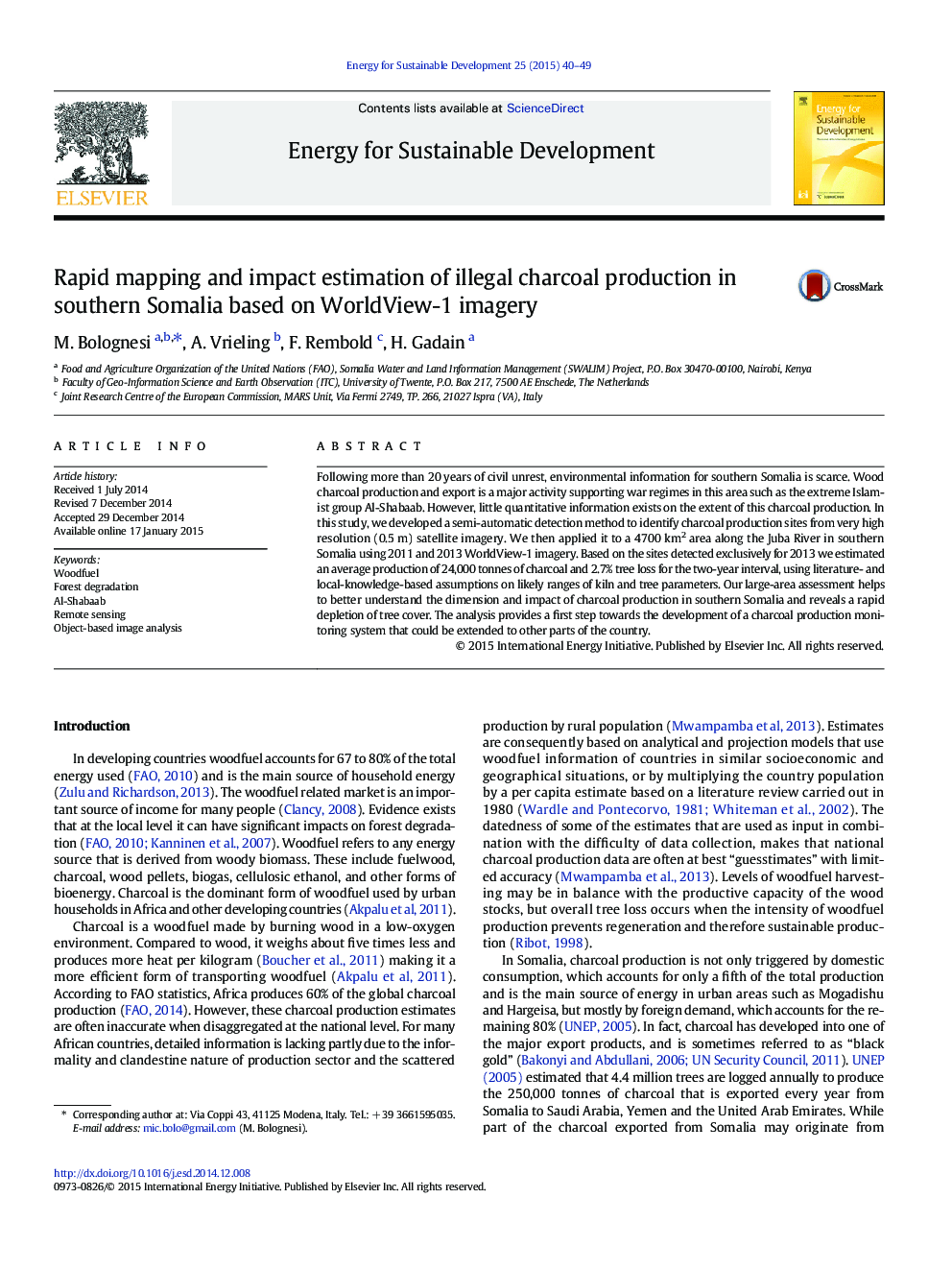| Article ID | Journal | Published Year | Pages | File Type |
|---|---|---|---|---|
| 1046858 | Energy for Sustainable Development | 2015 | 10 Pages |
•Charcoal production supports war regimes in southern Somalia.•We detect changes (2011–2013) in production sites from high-resolution imagery.•Using a semi-automatic approach the analysis covers a large region (4700 km2).•Identified changes suggest a substantial tree cover loss of 2.7% in two years time.•We discuss options for national-scale charcoal monitoring in Somalia.
Following more than 20 years of civil unrest, environmental information for southern Somalia is scarce. Wood charcoal production and export is a major activity supporting war regimes in this area such as the extreme Islamist group Al-Shabaab. However, little quantitative information exists on the extent of this charcoal production. In this study, we developed a semi-automatic detection method to identify charcoal production sites from very high resolution (0.5 m) satellite imagery. We then applied it to a 4700 km2 area along the Juba River in southern Somalia using 2011 and 2013 WorldView-1 imagery. Based on the sites detected exclusively for 2013 we estimated an average production of 24,000 tonnes of charcoal and 2.7% tree loss for the two-year interval, using literature- and local-knowledge-based assumptions on likely ranges of kiln and tree parameters. Our large-area assessment helps to better understand the dimension and impact of charcoal production in southern Somalia and reveals a rapid depletion of tree cover. The analysis provides a first step towards the development of a charcoal production monitoring system that could be extended to other parts of the country.
